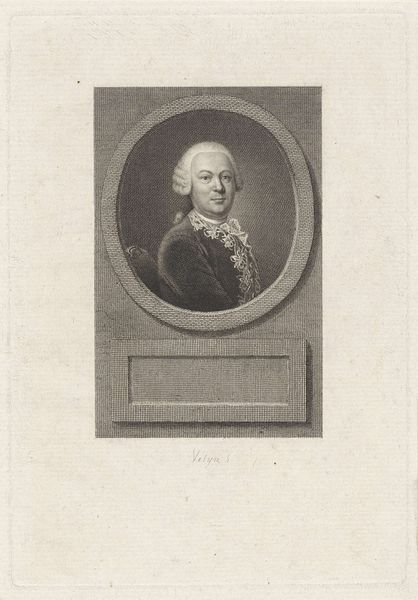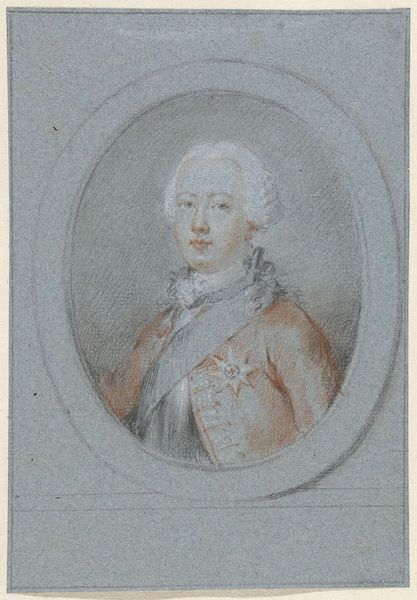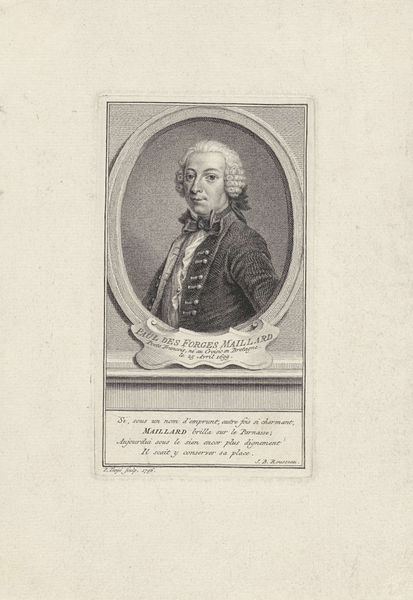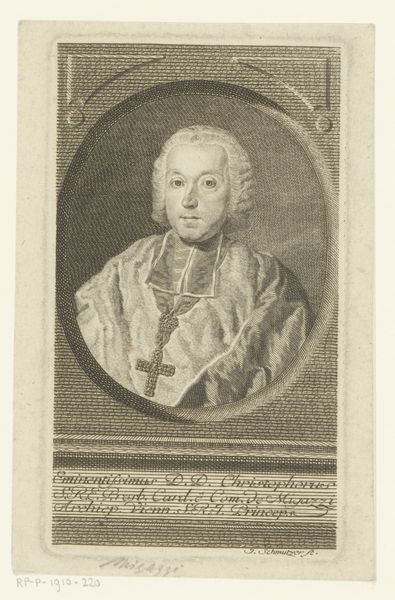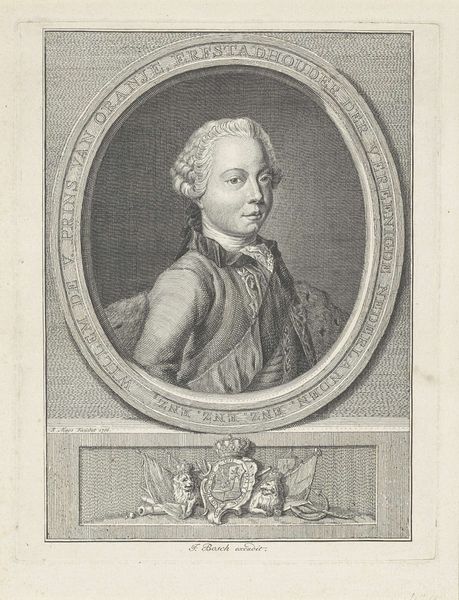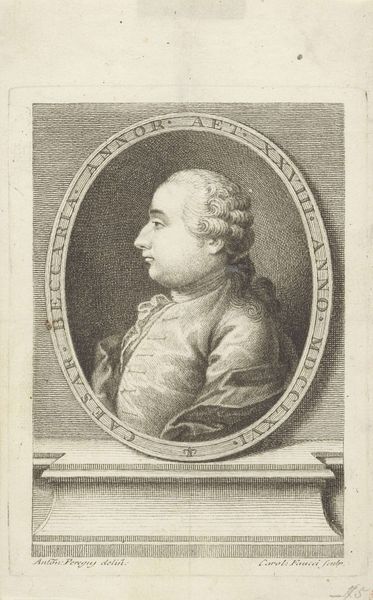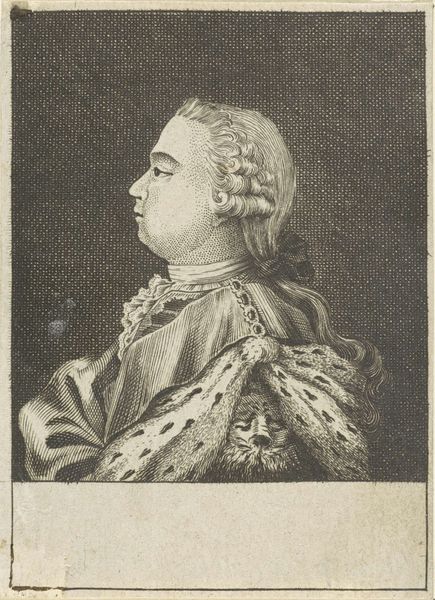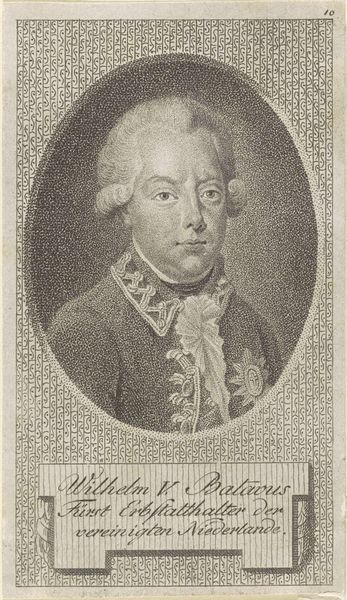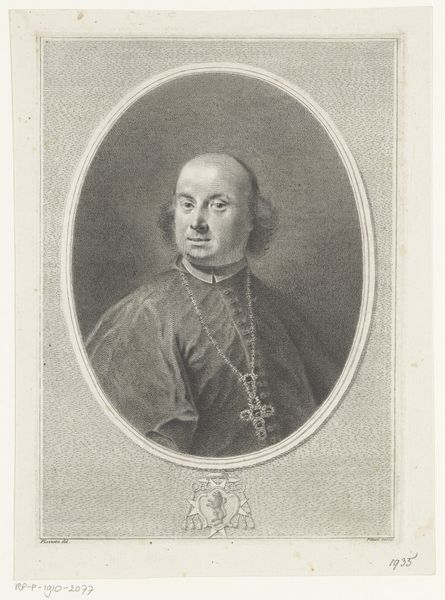
drawing, pencil, charcoal
#
portrait
#
drawing
#
charcoal drawing
#
figuration
#
pencil drawing
#
pencil
#
charcoal
#
history-painting
#
academic-art
Dimensions: height 35 mm, width 29 mm
Copyright: Rijks Museum: Open Domain
Editor: Here we have a charcoal and pencil drawing, dating from 1760 to 1820, titled "Bust in oval of George III, King of England." The details are exquisite, almost photographic in their precision, yet it feels like the sitter is deliberately distanced. How would you interpret this work through a historical lens? Curator: Well, portraits of monarchs served a very specific purpose. Beyond simple likeness, they communicated power, legitimacy, and even divine right. Consider the historical context: The 18th century saw rising social and political unrest. How do you think portraits like this might have functioned to bolster the image of the monarchy in the face of growing challenges to its authority? Editor: Perhaps this classical presentation with the oval border reinforces his regal status, but to me, it comes across a little…stiff? Like he is a symbol rather than a human being. Curator: Precisely! And consider where these images might have circulated. Were they primarily for the elite, or were attempts made to disseminate them more broadly? Think about printmaking and its impact on image distribution. The public’s perception of George III would be carefully managed, and images like this drawing would be one tool used to that end. Are there symbols here of class or imperial ambitions? Editor: Definitely! His clothing seems chosen to emphasize wealth and success. All of this was likely designed to evoke loyalty. It's interesting to consider how carefully such images were crafted as political statements. Curator: Exactly. This isn’t just art; it’s visual propaganda of sorts, intended to project an image of stability and strength, at a time when both were increasingly precarious for the British crown. Think how these strategies continue even in contemporary state events and digital content. Editor: So this isn’t just a drawing; it’s a meticulously constructed representation meant to reinforce the existing power structures. Curator: Exactly. Examining such an image, and discovering it’s historic influences and contemporary legacies, grants you the insight required for deeper interpretations of meaning and implications, something beyond simply describing what you see on the surface. Editor: It gives one something to think about, next time I am confronted with similar depictions. Thanks for clarifying!
Comments
No comments
Be the first to comment and join the conversation on the ultimate creative platform.
